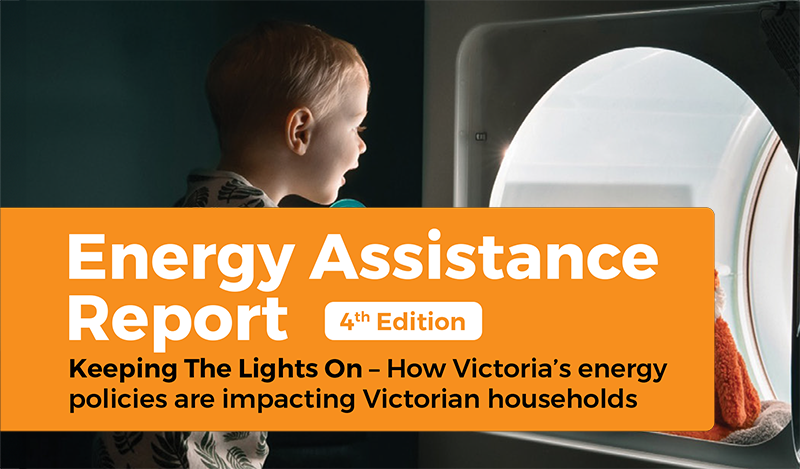REPORT Energy Assistance Report 4th Edition: Keeping the Lights On
The fourth edition of Consumer Action’s Energy Assistance Report outlines the growing trends of people facing energy hardship; barriers to accessing hardship assistance; and priority areas for targeted investigation and reform to assist energy affordability.
As identified in previous reports, energy continues to remain one of the top three presenting issues for Victorians contacting the NDH. With projected energy costs being higher than recent preceding years, and a changing landscape in how we use energy, there is urgent need for a sustainable and longer-term solution to energy affordability and growing debt in Victoria.
This report examines 12 months of NDH contact data from January to December 2023. This data is collected from all calls made by Victorian consumers experiencing energy hardship, answered by Consumer Action’s financial counsellors on the NDH.
The main findings of the Report are as follows:
Low-income households are being priced out of an essential service
According to our sample from the NDH, energy hardship is disproportionately impacting single mothers, renters and low-income Victorians. As we transition to renewables, the Victorian Government should consider reducing energy costs for low-income consumers via targeted programs. Access to an essential service must be protected regardless of income. Increasing Centrelink payments, automating concessions, and reforms in energy pricing could prevent thousands of Victorians from being priced out of an essential service.
Energy retailers are failing to consistently apply the Payment Difficulty Framework
We have found notable increases in retailers failing to provide adequate assistance through the PDF, with instances of retailers not offering the Utility Relief Grant increasing to 22% of energy contacts compared to 17% in the previous year, and inconsistent application of supports such as payment matching or pauses. To ensure retailers are providing meaningful assistance to Victorians experiencing payment difficulty as they are obligated under the PDF, investigations should be conducted to assess how retailers are implementing their PDF obligations, and the Essential Services Commission (ESC) should enforce against breaches where found.
More Victorian households are in energy hardship, and energy debt is increasing and unmanageable
This year’s report recorded the highest number of large energy debts over the six years of Consumer Action’s Energy Assistance Report, with the proportion of people in over $3,000 of energy debt doubling since the previous year. To manage this large-scale debt, we need to trial something different. As a start, retailers need to implement far more generous and sustainable measures for their customers. For very large, unmanageable debt, for example, where consumers are unable to pay arrears and ongoing usage costs, an effective solution would be debt waiver in addition to the preventative measures provided in the PDF.
Threats of disconnection are coercing people into further financial hardship
Ten percent of all energy contacts recorded an unaffordable payment plan. People often reported their retailer had pressured them to agree to a payment plan or face disconnection. Seventy-two percent of energy contacts presented with other debts, with some people reporting they are resorting to Buy Now Pay Later products to cover essential costs. In practice, this trend signals that retailers might not be providing all assistance options before threatening disconnection. Requiring retailers to refer the customer with their consent to the Energy and Water Ombudsman of Victoria (EWOV) before disconnection could provide people with independent support and protection against people being disconnected from an essential service due to experiencing financial hardship.
Vulnerable consumers are more likely to experience barriers from their retailer in when receiving assistance
Of all energy contacts, 76% disclosed having one or more vulnerabilities, directly or indirectly contributing to their financial hardship. Our data shows that people with compounded vulnerabilities were more likely to experience their retailer fail to identify their vulnerable circumstances. We found that women experiencing family violence (12% of energy contacts) were more likely to face aggressive debt collection practices, and significantly higher energy debts than those not experiencing family violence. The adoption of international service standards of consumer vulnerability, and systemic investigation into retailers’ adherence to assistance obligations would assist in providing adequate deterrence to retailers found in breach of these protections.
The full report and recommendations can be found here (PDF).
Download the 4th Energy Assistance Report data spreadsheet
CALC Energy Assistance Report 2024 FINAL_WEB

